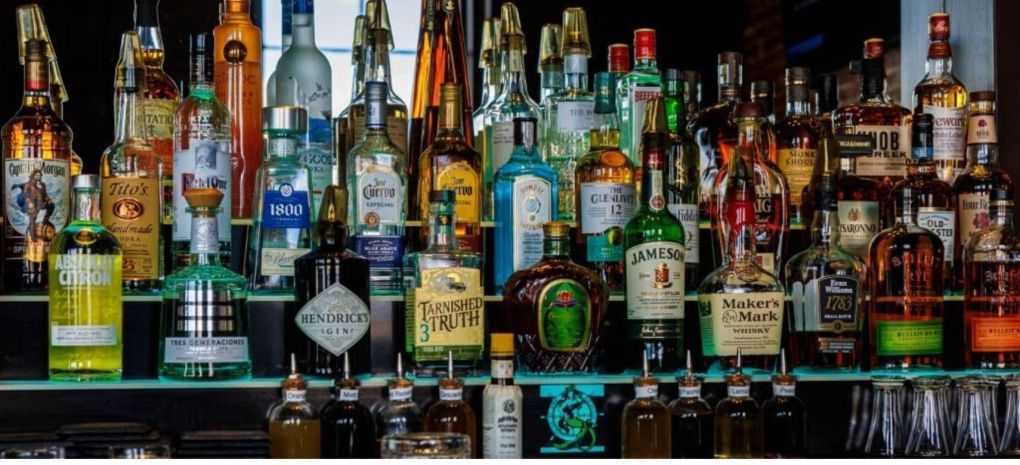
31/08/2023 The world of spirits is a captivating realm where companies battle for supremacy, fueled by innovation, marketing prowess, and a deep understanding of consumer preferences
From the storied traditions of whiskey to the trendy allure of craft gin, competition in the spirits industry is a complex dance of flavors, stories, and strategies. A close look at the key players, strategies, and market dynamics that define this spirited showdown will help understand how to excel in the art of bartending.
A Whiskey Renaissance
Whiskey, often hailed as the nectar of the gods, has experienced a renaissance in recent years. In this realm, titans like Jameson and Glenfiddich lock horns with boutique distilleries like Balcones and Kavalan. The competition is fierce, with established giants leveraging their rich heritage to capture consumer loyalty. For instance, Glenfiddich's claim as a family-owned distillery since 1887 resonates deeply with those seeking authenticity and tradition.

Image: (Left) Jameson Distillery at Bow St. Dublin, (Right) Glenfiddich Distillery at Dufftown, Banffshire
Yet, the whiskey arena is not just about age-old brands. Craft distilleries like Balcones have stormed onto the scene with innovative production techniques, creating unique flavor profiles that appeal to a younger, adventurous demographic. Their use of blue corn in their Texas Single Malt and experiments with various cask finishes showcase how innovation can be a powerful weapon in the competitive spirits landscape.
The Gin Revolution
Gin, once associated with a simpler time in the nineteenth century, has undergone a revolution, transforming into a playground for experimentation. Brands like Hendrick's and Bombay Sapphire have elevated gin to an art form, using botanicals to craft distinctive flavors that cater to consumers' evolving tastes.

Image: (Left) Hendrick's, (Right) Bombay Shapphire
Hendrick's, for instance, has garnered attention with its unconventional infusion of rose and cucumber, redefining the expectations of gin enthusiasts. Their whimsical branding, complete with a Victorian-style apothecary bottle, adds a layer of intrigue that sets them apart in a market traditionally dominated by more subdued aesthetics.
Tequila's Resurgence
Tequila, often relegated to the realm of shots and margaritas, has witnessed a resurgence in popularity as premium options flood the market. Patrón and Don Julio, among others, have paved the way for sipping tequilas that rival the complexity of aged scotch. Patrón's marketing strategy leans heavily on its artisanal production methods, promoting its hand-harvested blue agave and meticulous distillation process.

Image: Casamigos Tequila
Interestingly, cultural influences play a significant role in the tequila sector's competition. Brands like Casamigos, co-founded by George Clooney, capitalize on the star power of celebrities to attract consumers seeking a taste of the high life. Luxury and personal branding blend demonstrate how diverse strategies can thrive in the spirited battleground.
Craft Distilleries and Local Flair
The rise of craft distilleries has added a layer of authenticity and locality to the competition. These small-batch producers often focus on community engagement and a hands-on approach to production. Tuthilltown Spirits, for instance, brought attention to New York's Hudson Valley with its Hudson Whiskey line. By embracing its roots and employing a grain-to-glass philosophy, Tuthilltown resonates with consumers seeking a genuine, locally sourced experience.
[[relatedPurchasesItems-31]]
Global Reach, Local Tastes
Globalization has redefined the spirits industry's boundaries, allowing brands to traverse continents and cultures. This phenomenon has led to interesting adaptations. Take, for instance, Japanese whisky, which has taken the world by storm. Brands like Yamazaki and Hibiki have gained international acclaim by merging the precision of Japanese craftsmanship with the revered tradition of whisky-making.
In contrast, regional preferences remain crucial. Bacardi, a global rum powerhouse, recognizes this by tailoring its offerings to suit the palates of various markets. While Bacardi Superior might be the go-to for classic cocktails in North America, Bacardi Carta Oro takes center stage in markets that prefer a more aged and nuanced rum.

E-Commerce and Accessibility
The digital era has transformed the way consumers engage with spirits. Online platforms and e-commerce have opened up new avenues for brands to connect with their audience. Master of Malt, an online retailer, offers an extensive selection of spirits, making rare and exotic bottles accessible to enthusiasts worldwide. This shift has encouraged brands to create compelling online experiences, from virtual distillery tours to cocktail recipe hubs, enhancing their competitive edge.
In all, the spirits industry constitutes a dynamic battleground where tradition meets innovation, and local stories collide with global aspirations. Understanding this history and the current situation is critical for successful bartenders and spirits programs. It's a world where established giants showcase their legacy, craft distilleries challenge the norms, and cultural influences shape consumer preferences. As consumers' tastes evolve and new trends emerge, the competition in this industry remains spirited, inspiring companies to raise the bar, experiment boldly, and craft experiences that capture the essence of their brand. Whether it's the elegance of a carefully aged whiskey or the vibrancy of a botanical-infused gin, the spirits industry's competition is a captivating saga of flavors, stories, and the pursuit of perfection.



